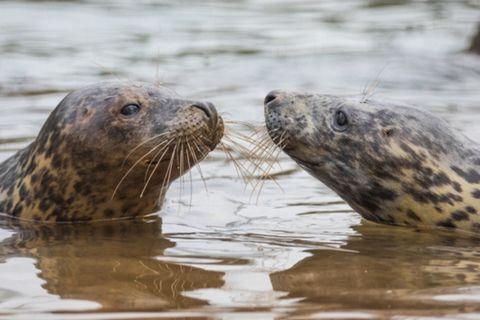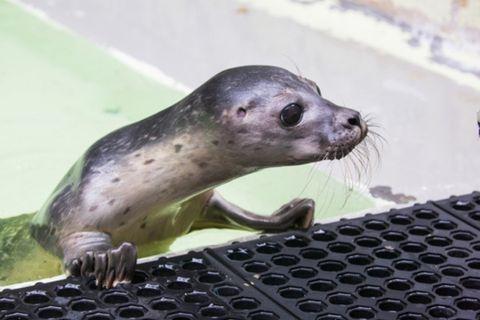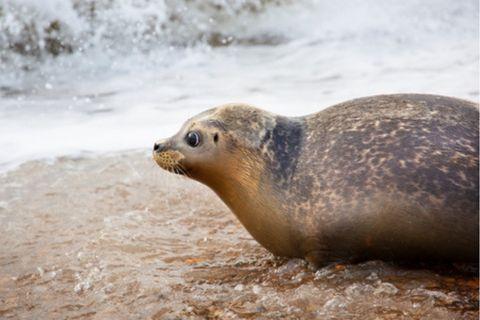Where can you see seals in the UK?
Seals can be found all around the UK coast, but mostly around the north and east. Common seals are found in Scotland, and our eastern and southeast coast whereas grey seals are found mostly around our northern, eastern and western coastlines.
They’ll come onto shore on quiet beaches and rocky areas to rest, digest their food and give birth to their pups. Although they spend most of their time in the sea, it’s completely normal for them to come on to beaches. If you’re lucky, you might even see them resting in the banana pose!
It’s normal to see seals in rivers or water bodies further inland when they’re looking for food. There’s no need to call us for help unless the seal is sick, injured or is stuck between locks or weirs. Crowds can cause stress, so try to stay away and watch them from a distance.

When do seals breed?
Common seals give birth to their pups in June and July, and their pups will go into the water soon after they’re born.
Grey seals have their pups at different times of year depending on where they are. Grey seals that live in the south-west will start having their pups in September, followed by the populations in Scotland in October and November and finishing with seals on the east coast around December. Grey seal pups have white coats, and they won’t go into the water until they’re two or three weeks old.
Watching seals safely
Wild seals are an amazing sight to see, but it’s really important to leave them alone and not get too close.
Disturbing seals when they’re on beaches can mean they can’t sleep or digest their food properly, or mothers and pups could be separated from each other. It’s also dangerous for people or dogs to get too close to them, as seals have a painful bite.
The best thing to do is to move slowly and quietly, paying attention to any signs up on the beach. Always keep at least 100 metres away - that’s about the same length as a full-sized football pitch. Use binoculars to watch them, and keep dogs on a lead or leave them at home if you can.
If the seals are looking at you, then you’re too close and you’ll need to back away quietly. Find more tips on watching seals from the Seal Alliance.
How to tell if a seal is sick or injured
It’s normal for healthy seals to spend time on beaches, so if you see one on a beach there’s no need to worry unless you see any of these signs too
This isn’t a complete list, so if you’re not sure then contact us for further advice.
- They’re tangled in netting, or there’s something stuck around their necks
- You’ve seen the seal being attacked by a dog
- They’ve got injuries or open wounds
- The seal is thin - if you can see their neck clearly, this usually means they’re underweight
- They’re shivering, and you’ve seen them doing this for more than 15 minutes. They might also shiver if they’re frightened, so make sure you’re not too close
- It’s a seal pup that you’ve been monitoring for 24 hours and the mother hasn’t returned
If you’re worried about a seal, then the best way to help is to watch it from a distance. Never try to approach them, touch them or move them back into the sea as this can be dangerous for the seal and make it harder for the experts to rescue them safely. Watch it for an hour or two - they may wander off. After that time if it’s clear that they need help, contact us on 0300 1234 999.
Because cruelty and neglect calls are our top priority, it might take us longer than we’d like to help this seal. We appreciate your understanding.






